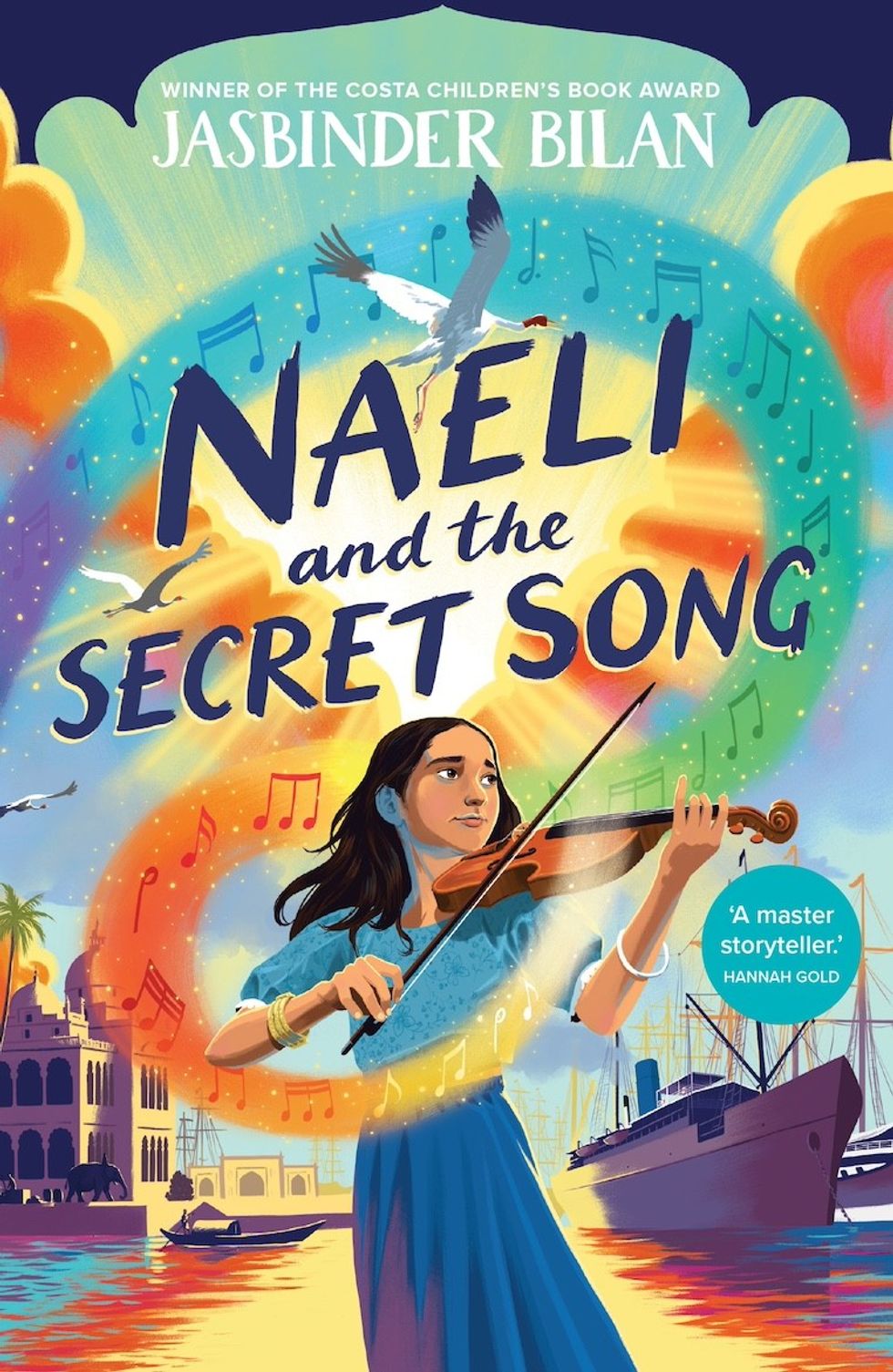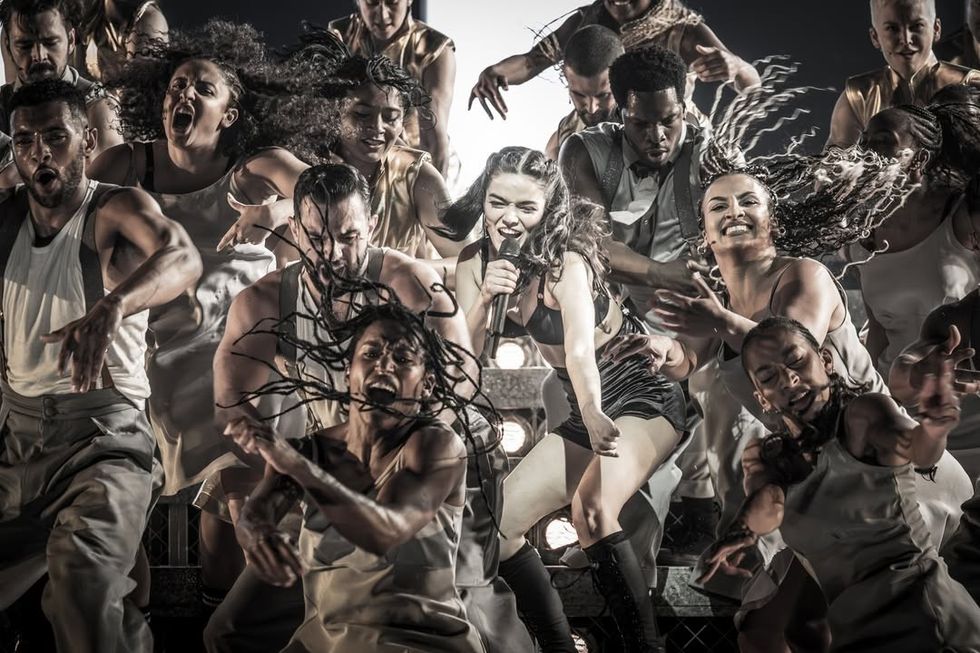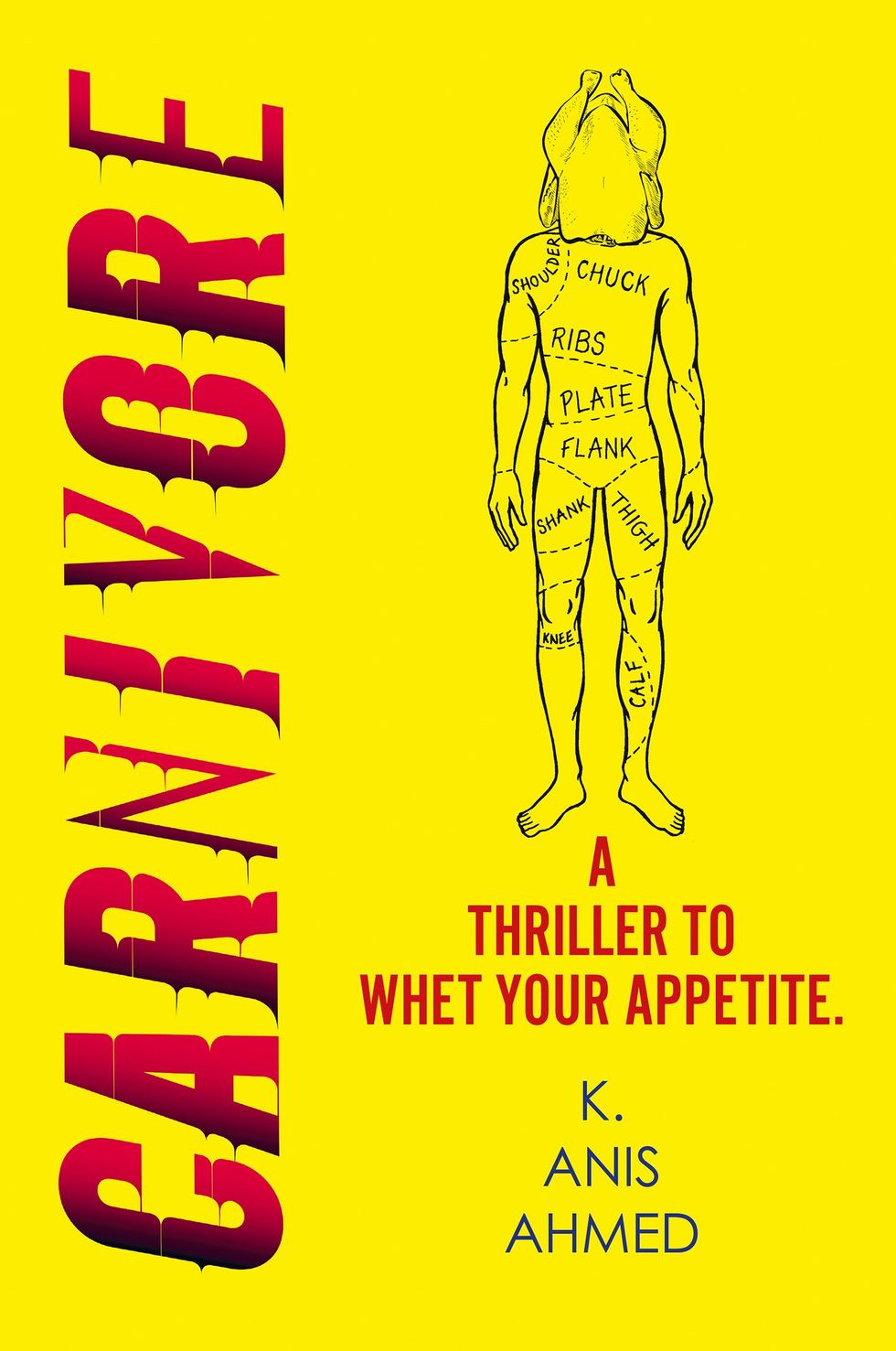by ASJAD NAZIR
FOUR FOOD BLOGGERS GIVE EASTERN EYE READERS THEIR TOP HINTS AND TIPS FOR CULINARY SUCCESS
IN THE past, those who wanted to learn cooking, improve their culinary skills or get inspiration for new dishes would refer to TV shows, books or elders in the family.
But today, some of the most delicious ideas are available online, including on video-sharing sites, blogs, websites and social media. The online unsung heroes of the cookery world regularly mix up recipes, ideas and techniques.
Eastern Eye caught up with four bloggers to talk about cooking, tips and how to get inspired when preparing meals. Not surprisingly, we felt hungry after and headed straight for the kitchen...
HEMALI TOPIWALA
What first got you connected to cooking?
From a young age my mum was adamant I knew how to cook, so all my school holidays were spent in the kitchen learning how to make a traditional Gujarati dinner. I didn’t enjoy anything about it then and making chapattis felt like some kind of punishment, but little did I know that those lessons would come into fruition years later!
What was the starting point of your blog?
Most of my meals are centred on healthy eating and I wanted to share that with everyone. I would often get family members and friends asking me for tips or recipes, and felt others would want to know too. My aim is to show just how easy eating healthy can be and how to do it alongside a full-time job.
What happened next?
It started with my Instagram page. When posting pictures I was often asked for the full recipe of dishes, so I started uplo-ading my most popular ones onto my blog. Through my Instagram and blog, I’ve appeared on a culinary TV show with Gordon Ramsay and took part in a live cooking demo at a local food festival.
I’m often contacted by companies who send me products to sample and use in my cooking in exchange for features on my blog as well as invites to restaurants, which is great!
What do you enjoy cooking the most?
I don’t think there’s just one thing. I love cooking a healthy breakfast – poached eggs, grilled asparagus and steamed spinach on charred sourdough. I really enjoy throwing together big bowls of leafy salads with roasted vegetables, whole grains and some lean protein.
And we can’t forget something sweet, you can always find banana bread in my kitchen!
What top cooking tips would you give?
Don’t over-complicate things and just go with the flow. The tastiest dishes are those with minimal ingredients. You want to be able to taste all the flavours.
What common mistakes do people make in the kitchen?
Not trying in the first place is the biggest mistake! So often people think it’s easier to buy a ready-made meal rather than cook, and that’s where they are wrong. Cooking can be as quick and simple as you want it to be, and there’s nothing better than a fresh home-made meal.
Are there any key cooking tips for beginners?
Start with simple recipes and get to know the methods behind cooking certain dishes. Cook things you enjoy eating, and once you start feeling more confident, add in extra herbs or spices, switch up the ingredients, see how things collaborate and make it your own.
How important is to learn about ingredients?
It is important but for me it’s not where the art of cooking lies. You should know which ingredients go well together, but at the end of the day there are no rules and it’s trial and error.
If I come across ingredients I’ve not used before, I do some research as to how they are cooked or what they are used in to familiarise myself. But I won’t necessarily follow through with it, especially if I think I want to try it differently.
You share cooking knowledge, but is there anything you want to learn?
Always! You can never stop learning in the kitchen and I’m always getting new ideas and tips from other bloggers, friends and most importantly my mum! If there’s anything I’m not sure about I know she’ll have the answer, and while my cooking started with Indian food, I have to say I don’t cook it as much on a day-to-day basis.
There are lots of traditional Gujarati dishes my mum makes, which I just love. I really need to learn those from her!
Have you had any disasters?
Yes, plenty! From collapsed cakes to dry fish, over-cooked pasta and split sauces! I am by no means a professional, but I see every disaster as a challenge to make it right the next time!
In terms of creating dishes, where do you draw your inspiration from?
It’s a mix of the foods I love to eat with inspiration from different cuisines. I’ll often go out for dinner and really enjoy a dish, then attempt to recreate it at home. I follow lots of other bloggers too so often find inspiration from them, or I may have one ingredient I want to use so will research recipes before pulling together something I fancy.
Why do you love cooking?
Because there’s no right or wrong way to cook! I very rarely follow recipes; it’s all down to using my imagination, seeing what I can rustle up and how it will taste. I love eating good, tasty, nutritious food and it gives me a rush of excitement when I’m going to cook something new. I can’t wait to take my first bite and let my taste-buds marvel amongst the flavours.
- See Instagram: @thesouregg and www.thesouregg.com for more
KRIPA DEWANI
What first got you connected to cooking?
I never showed much interest growing up, but during my student years my mum was adamant I needed to learn my way around the kitchen and some basic methods of cooking. Reluctantly I would obey and that was my first connection.
What was the starting point of your blog?
My eldest daughter was experiencing severe stomach pain at the age of three, and despite doing medical tests we couldn’t figure out why. I tried eliminating certain food groups in search of reasons like gluten and dairy, but failed to solve the problem. Then a paediatrician concluded she was simply hypermobile and therefore constipated.
Apparently this is seen in 30 per cent of children in the UK, but parents don’t seem to find out because despite the constipation, children use the loo regularly. Having a background in chemistry, my natural inquisitiveness makes me question all methods, and having my child on chemical laxatives didn’t seem like the best option. That’s when I revolutionised my kitchen by declaring war on processed foods.
What happened next?
I educated myself in nutrition. All my mummy friends, including school mums, would constantly ask for advice and recipes. So I started collating it all on Instagram, launching 15 Minute Mom as a portal for busy parents and a hub for anyone wanting the basics on nutrition and recipes easy to follow and quick to produce.
What do you enjoy cooking the most?
I love cooking up quick recipes. My meals need to be nutritionally-balanced, but shouldn’t take more than 15 minutes. Time is too precious and I would rather play or read with my children than spend an hour cooking.
What top cooking tips would you give?
Prepping and planning! A few cheats can go a long way. Also having the right ingredients in the fridge and pantry on a regular basis really helps to snap up a great, quick and easy meal.
What common mistakes do people make in the kitchen?
Following recipes to the T. It is important to be a little creative and be able to pick up a recipe and alter it to your benefit. That includes swapping ingredients, using what’s available in your kitchen, and modifying recipes to make life easier.
Is there any key cooking advice for beginners?
I would say learn about food groups and what proportions should be on your plate. That really helps in the selection of ingredients for a meal.
How important is to learn about ingredients?
Very! Essential in fact! If you know your macros (that’s carbs, fats and proteins), you can design a perfectly-balanced meal. If you know your spices, you can season effectively. Also if you know your ingredients, it’s easier to mix and match.
You share cooking knowledge, but is there anything you want to learn?
Food is evolving and the knowledge of different food health benefits is increasing,
so there’s always so much to learn. It’s also important to not get sucked into current trends and fads. Knowledge is power and balance is the key. Also if you know enough about your ingredients, cooking just comes intuitively.
Have you had any cooking disasters?
All the time! I’m a bit of a scientist in my kitchen and experiment with food as if in a lab. Disasters are part of my learning and play an important role in curating my recipes.
In terms of creating dishes, where do you draw your inspiration from?
Everything I see and eat! Restaurants, grocery stores, recipe books, social media and the internet. I can look at something interesting and imagine a whole new dish around it.
Why do you love cooking?
I love cooking because I love eating! I love food, but most importantly I love clean and healthy food. My wellbeing and the wellbeing of my family is the key to a happy and energetic lifestyle.
- Visit www.15minmom.com and Instagram: @15min_mom for more
PRIYA JOSHI
What first got you connected to cooking?
My mum started to teach me how to roll out rotli when I was about 10. Living with someone who cooked something different every single day was a real inspiration and for me to learn from. As I got older, I’d start helping her and learning what kind of spices went with what kind of meats and vegetables.
What was the starting point of your blog?
I started a blog as lots of friends and work colleagues would say they wanted recipes of things I’d cooked and posted on my Instagram page. I decided online would be the best way to share my love of food and recipes for people to try. Since moving to London, I’ve started to eat a wide range of cuisines from around the world, which is helping me with developing my cooking.
What happened next?
I started my blog about a year ago, mostly blogging recipes I developed myself, as well as restaurant reviews if I’ve been somewhere that’s particularly caught my attention with its ambience and flavours.
What do you enjoy cooking the most?
I love cooking Indian food, as it’s what I grew up eating and learning from my mum and in the last few years, my mother-in-law. The way a piece of fish, meat or even the humble vegetable can be transformed into something anyone would enjoy with the use of some everyday spices is what I find fascinating.
What top cooking tips would you give?
Don’t be afraid of using spices in food that you may not think would work, even a little black pepper, lemon juice and salt when used correctly will transform any dish to another level.
What common mistakes do people make in the kitchen?
Overcooking meat and fish is an easy mistake to make. A great tip if you do these on a regular basis is to invest in a meat thermometer. It is a perfect tool to ensure your dish is cooked to perfection and doesn’t overcook and go dry.
Is there any key cooking advice for beginners?
Always taste your food while you’re going. If you’re making a curry, taste your masala before adding your meat to it; it should be a little bit salty, that way, the extra seasoning will help your meat or fish to be flavoured to perfection. That’s a tip that my mum gave me about 15 years ago, and I still use it today.
How important is to learn about ingredients?
If you learn the basics about spices, they will allow you to create all kinds of dishes, sweet or savoury. Alongside spices, using good quality, seasonal meat and vegetables will mean your meals will be at their best.
You share cooking knowledge, but is there anything you want to learn?
Yes, absolutely! I’m always learning new things about food. New cooking techniques and flavours are what cooking is all about. There’s always a new ingredient or something seasonal which is only around for a few weeks of the year.
A good example is wild garlic here in the UK. I used it for the first time in my life this year and absolutely fell in love, making everything from pesto to keema with it. It’s a brilliant seasonal ingredient and you should make the most of it while you can get it.
Have you had any disasters?
Yes, just ask my husband! This often happens when I try to recreate something I’ve eaten in a restaurant. The worst disaster I’ve had to date has to be a bianca pizza I made; the sauce was too runny and it made for a soggy bottom!
In terms of creating dishes, where do you draw your inspiration from?
First and foremost my mum and mother-in-law, who are brilliant cooks. They have so much experience and been cooking longer than I’ve been around! I also have lots of cookbooks from a wide range of chefs. I love looking to them for inspiration. Being so used to Indian dishes growing up, it’s great to read about global cuisine and create my own from there.
Why do you love cooking?
Cooking allows me to be creative in a way like no other. It’s an art form which brings people so much joy. Having other people enjoy a meal I’ve cooked is what makes me love it the most.
- Visit Twitter & Instagram: @joshicooks and www.joshi cooks.com for more
ZULEKHA ARAFAT
What first got you connected to cooking?
Coming from a conservative family meant my grandma’s ethics were a woman should know cooking. So she taught me how to cook at 14 and I have been connected ever since.
Tell us about your blog...
My grandma teaching me how to cook and being the beginning of my learning means my blog has been dedicated to her. I share a variety of recipes and ideas on there. Any benefits coming from this blog goes to charity in her name.
What do you enjoy cooking the most?
When you cook from the heart, all dishes you prepare are enjoyable. So whether you are cooking something simple or complex, prepare it from your heart and with love.
What common mistakes do people make in the kitchen?
People usually add more of salt/chilly powder than required. So here is my suggestion; add a little, then taste it, and if needed you may add more later.
Are there any key cooking tips for beginners?
Cooking is an art, so don’t misunderstand it as a responsibility. Start with easy recipes and then slowly move on to more complex ones. The whole idea behind cooking is to reach someone’s heart through your food, and that can also be done by simple recipes too.
How important is it to learn about ingredients?
Yes, it is important to learn about ingredients and for that it requires knowledge and importantly more experience.
You share cooking knowledge, but is there anything you want to learn?
It’s been 25 years of cooking now, but still I have passion and greed for learning new recipes and techniques.
Have you had any disasters?
Yes, I do have cooking disasters when I am creating or innovating a new recipe. It’s perfectly fine to have disasters as this gives you experience and a way to learn and correct the recipe to make in future.
In terms of creating dishes, where do you draw your inspiration from?
Being a fashion designer means that I have a habit of thinking out of the box, so that comes naturally and helps me create a new recipe well. I also draw inspiration from loved ones including my husband, who once told me to make something really different and I created chicken katoris.
With this particular recipe, I made the katoris of chicken mince and served with sauté veggies, with grated cheese and as a chaat.
Why do you love cooking?
When you have a foodie family you automatically become passionate about cooking.
- See www.zulekhaskitchen.com for more















 Naeli and the secret song
Naeli and the secret song
 Jamie Lloyd’s Evita with Rachel Zegler set for Broadway after London triumphInstagram/
Jamie Lloyd’s Evita with Rachel Zegler set for Broadway after London triumphInstagram/
 A compelling premise, layered and unpredictable charactersAMG
A compelling premise, layered and unpredictable charactersAMG Anyone who enjoys a gripping story with a diverse cast and unexpected twistsHarperFiction
Anyone who enjoys a gripping story with a diverse cast and unexpected twistsHarperFiction
 The Story Teller by Ley Roberts
The Story Teller by Ley Roberts Summer Exhibition coordinator Farshid Moussavi, with Royal Academy director of exhibitions Andrea Tarsia in the background
Summer Exhibition coordinator Farshid Moussavi, with Royal Academy director of exhibitions Andrea Tarsia in the background An installation by Ryan Gander
An installation by Ryan Gander A sectional model of DY Patil University Centre of Excellence, Mumbai, by Spencer de Grey
A sectional model of DY Patil University Centre of Excellence, Mumbai, by Spencer de Grey Rituals and Identity and Theatre of Resistance by Arinjoy Sen
Rituals and Identity and Theatre of Resistance by Arinjoy Sen